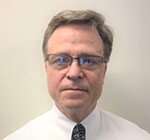The SPE Oil and Gas Reserves Committee (OGRC) has posted its inaugural version of the SPE Petroleum Resources Management System (PRMS) FAQs on the SPE website. The FAQs present questions frequently received from industry with answers prepared by the FAQ Subcommittee and reviewed by the OGRC and PRMS co‑sponsors. The FAQs address select topics on the interpretation and application of the Petroleum Resources Management System (PRMS) on the evaluation and classification of petroleum reserves and resources.
The SPE-OGRC is responsible for programs dealing with oil and gas reserves and resources matters, including reserves and resources definitions, recommended practices, and standards. PRMS co-sponsors’ representatives that have endorsed the PRMS and the PRMS Applications Guidelines (AG) are involved with the OGRC in its stewardship of the PRMS. The co-sponsor organizations are the Society of Petroleum Evaluation Engineers (SPEE), the American Association of Petroleum Geologists (AAPG), the Society for Exploration Geophysicists (SEG), the Society of Petrophysicists and Well Log Analysts (SPWLA), the World Petroleum Council (WPC), and the European Association of Geoscientists and Engineers (EAGE).
The FAQs provide a means for informal guidance on the interpretation of PRMS topics that have been commonly requested by industry to the OGRC. The FAQs also provide an avenue for additional questions to be submitted directly to the OGRC and co-sponsors for future FAQ considerations. The FAQs are intended to complement the PRMS and under no circumstance replace the PRMS. If differences arise, the PRMS is the formal reference.
With the update frequency of the PRMS and the PRMS AG dependent on the OGRC’s assessment of the industry’s evolving needs, such frequency has been historically in the 10-year range for the recent updates to both. The latest update to the PRMS was in 2018 from the initial issuance in 2007. The PRMS AG was recently updated in 2022 from the 2011 vintage. As the OGRC stewards the PRMS to maintain its continued relevance and “evergreen” status, there was a recognized need by the OGRC to provide industry additional informal means to receive interpretational guidance. The FAQs are one of the methods the OGRC now supports to provide PRMS interpretational guidance on an ad hoc, as needed, timing basis.
The FAQs will be an evergreen set of questions that have been commonly requested to the OGRC for additional clarification and are updated periodically. Each FAQ posted has a date of most recent update denoting the most recent referenced update for that question. New FAQs are envisioned to be added in the future with additional topics submitted to the OGRC that are determined to benefit the industry with additional guidance.
The figure shows the Table of Contents for the FAQs published in November 2022.
The FAQs contain 42 questions: 3 on Communication with the SPE OGRC; 1 on Production; 11 on Reserves; 9 on Contingent Resources; 2 on Prospective Resources; and 16 on Miscellaneous Topics. The Miscellaneous Topics include Consumed in Operations (CiO), in-place and recoverable hydrocarbons, technology, economics, aggregation, Production Sharing Contracts (PSCs), Abandonment, Decommissioning, and Restoration (ADR), and frequency of review.
The OGRC looks forward to the industry’s additional question submissions and endeavors to continually grow the PRMS FAQs guidance on the PRMS’s practical application.
Acknowledgments
Members of the SPE OGRC FAQ Subcommittee, Examples Subcommittee, OGRC members, and PRMS Sponsor organizations that have diligently volunteered their time and effort in the reviews and to contributing viewpoints in the delivery of the FAQs. Of notable contribution to the FAQs development were Dan Olds, Bernard Seiller, Rawdon Seager, Steve McCants, Greg Horton, Danilo Bandiziol, Barbara Pribyl, Doug Peacock, Ian McDonald, and Xavier Troussaut.

Daniel DiLuzio works in Chevron’s Global Reserves group where he is a member of Chevron’s Reserves Advisory Committee responsible for the assurance of Chevron’s oil and gas reserves and resources. He has 38 years of global upstream industry experience in development and reserves/resources management with Chevron, Shell, Total, Newfield, and Encana. DiLuzio is a member, and prior chair, of the SPE Oil and Gas Reserves Committee and chaired the PRMS Update Subcommittee delivering the PRMS 2018. He is also a current committee member of the SPE CO2 Storage Resources Committee, a member of the Society of Petroleum Evaluation Engineers, and a registered Professional Engineer in Texas. He holds BS and MS degrees in petroleum engineering from Louisiana State University.

